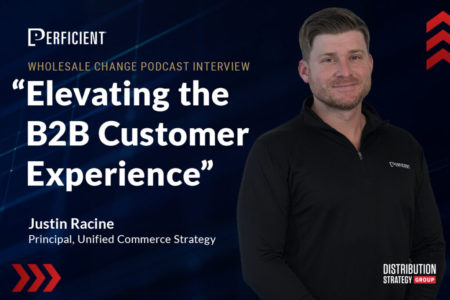In today’s fast-paced digital world, users expect websites and applications to load quickly and run smoothly. Performance optimization in Frontend Development is not just a technical requirement – it is an important factor that can create or break user experience, engagement and conversion. If you are a developer, designer, or product owner, then here is why the front performance should be at the top of your priority list – and how you can start improving it now.
Why performance matters
1. User Experience – First Impression Matter
A well-optimized website attracts and retains users, while a poorly performing one pushes them away.
Over half of people using their phones will leave a website if it takes more than 3 seconds to load. If your site is slow, they might never even see what you’re offering before they leave.
2. SEO Benefits
A well optimized website isn’t just good for your users — it’s great for search engine optimization (SEO). Businesses that ignore performance risk losing visitors and rankings.
Better performance = better SEO = more visibility and traffic.
3. Conversion rate – speed = more revenue
Performance has a direct impact on conversion and revenue. Even a one-second delay in page load time can reduce conversions by up to 7%. Fast sites accelerate sales and make customers happy.
4. Mobile Optimization
Reach every user with mobile devices dominating web traffic, performance on mobile is important. Mobile networks can be slow and less reliable, which makes it necessary to ensure that your site performs well everywhere from high end desktop to low end smartphones. If your site is not adapted to mobile, then you are losing users for those competitors.
Key Areas for Performance Optimization
Now that we know why performance matters, let’s talk about how to achieve it — without overcomplicating things.
1. Minimize HTTP Requests
Every image, script, and stylesheet make an HTTP request. The fewer requests, the faster your page loads.
Tips: Combine files: Merge CSS and JavaScript files.
2. Optimize and Compress Images
Images are often the heaviest part of a webpage.
Tips:
• Use modern formats like WebP or AVIF.
• Compress images with tools like TinyPNG or ImageOptim.
• Lazy-load images to load them only when needed.
3. Leverage Browser Caching
Enable caching so browsers store static files like images, CSS, and JS locally, reducing server load on repeat visits.
Set proper cache headers to make the most of this technique.
4. Minify CSS and JavaScript
Minification removes unnecessary characters (spaces, comments) from your code, reducing file size and improving load time.
- Why Minify CSS?
Improved Page Loading Speeds
Because minified CSS reduces file size, browsers can render pages faster, especially on slow connections, and download stylesheets more quickly.
- Improved Performance in Rendering
Faster style parsing and application results from smaller CSS files, which raises First Contentful Paint (FCP) and Largest Contentful Paint (LCP) scores—two important metrics in Core Web Vitals.
- Decreased Bandwidth Utilization
Minified CSS lowers the amount of data sent over the network, which is particularly helpful for mobile users or those with limited data plans.
- Enhanced Effectiveness of Caching
Because minified files are frequently bundled, fewer HTTP requests are made, and browser caching is better utilized.
- Why Minify JavaScript?
The number of bytes sent to the browser is decreased by minified JS files, which is particularly important for low-power or mobile device performance.
- Decreased Rendering Blocking
JavaScript has the ability to prevent HTML rendering and parsing. By reducing the blocking time, minification enhances visual speed metrics such as First Input Delay (FID).
- Improved Delivery Efficiency
Minification significantly reduces the size of JS payloads when used in conjunction with gzip compression, which speeds up network delivery.
5. Optimize JavaScript Execution
Heavy JavaScript can block rendering and hurt performance.
Tips:
• Defer or async-load non-essential scripts.
• Code splitting: Break large JavaScript files into smaller chunks and load them as needed.
• Minimize use of third-party scripts and libraries.
6. Monitor and Measure Performance
You can’t improve what you don’t measure.
Tools to monitor and audit your site:
• Google Lighthouse
• PageSpeed Insights
• WebPageTest
• Chrome DevTools
• Real User Monitoring (RUM) tools like New Relic or Datadog
Regularly review these metrics to catch issues before users do.
7. Use Placeholder UI (Skeleton Components)
For Example – Use skeleton component. It provides a visual representation of the layout and structure of the content that will eventually be displayed, helping to improve the user experience during loading times.
To learn more about Skeleton components, check my previous blog where I have explained its features and usage.
https://blogs.perficient.com/2023/12/13/understanding-skeleton-component-in-react/
https://blogs.perficient.com/2023/12/13/implementing-skeleton-components-in-react/
What Happens If You Ignore Performance?
Let’s be real — ignoring performance optimization has consequences:
• Slow loading makes users bounce before they engage.
• Laggy interactions frustrate users and break trust.
• Layout shifts (CLS) create poor experiences, causing accidental clicks.
• Accessibility issues lock out users on slower devices or weak connections.
In short, bad performance equals lost users and lost revenue.
Final Thoughts
Performance optimization is about more than just speed — it’s about creating a smooth, inclusive, and engaging experience for every user.
If you want people to love your product, share it, and come back, performance has to be a top priority — from the start.
“A great user experience starts with great performance.”
Source: Read MoreÂ


